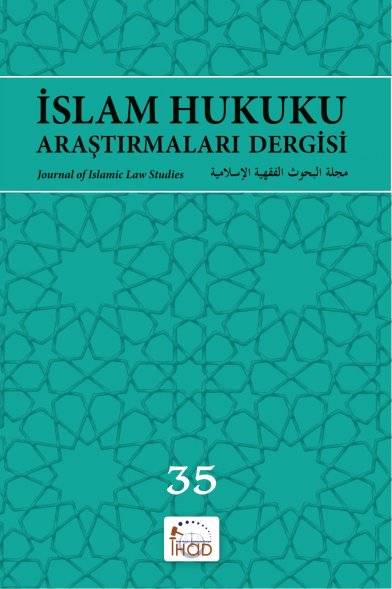Kur’ân’ın Umûm Bildiren İfadelerinin Haber-i Vâhidle Tahsisi Konusundaki Usûlî Tartışmalar
Kur’ân nassı karşısında hadislerin fonksiyonu sorunsalını yakından ilgilendiren bir mesele olarak haber-i vâhidlerle Kur’ân’ın âmm lafızlarının tahsisi konusu, klasik usûl uleması arasında ciddi tartışmalara medar olmuştur. Nassların sübût ve delâlet kuvvetlerinin karşı karşıya gelip tercihi gerektirdiği bir konu olarak âhâd haberlerle tahsis meselesi, bu tahsisin taraftarı ve karşıtı olan usûlcüler açısından ihtilafa konu olan âmmın delâletine dair görüşler etrafında şekillenmektedir. Ancak mesele, farklı görüş sahiplerinin haber-i vâhide verdiği otoritenin derecelerini gözler önüne sermesi açısından da önem arz etmektedir. Bu makalede, bu tür bir tahsis konusundaki çeşitli görüşlerin kaynağının yanı sıra bu hususta kendilerine has bir yöntem geliştiren Hanefîlerin yaklaşımı analiz edilmekte ve tartışmanın pratik sonuçları incelenmektedir.
Anahtar Kelimeler:
Fıkıh Usûlü, Haber-i Vâhid, Tahsis, Âmm Lafız
Jurisprudential Discussions on the Subject of the Specification by Khabar Al-Wāhid of Quranic Utterances Expressing General Meaning
As a matter highly relevant to the issue of what function hadith has in correspondence to the Quranic text, the subject of how the single prophetic narration (khabar al-wāhid) can specify (takhsīs) the Quran’s general utterance (al-lafdh al-āmm) was significantly discussed by classical scholars of legal thought (usūl). The confrontation between the strength of authenticity (thubūt) and reference (dalālah) of scriptural verses (nass; pl. nusūs) requires that a choice be made between the two. This confrontation was built around different perspectives regarding the textual indication of general meaning, which acted as the source for dispute (ikhtilāf) between the respective scholars that argued for and against this sort of specification. The issue, however, is also important in terms of showing the levels of authority that the differing scholars gave to khabar al-wāhid. Along with studying the sources of various opinions on such specification, this article analyses the approach of the Hanafi school, which developed a special method on this point, and the practical results of the debate are examined.
Keywords:
Islamic Legal Thought (usūl al-fiqh), Single Prophetic Narration (khabar al-wāhid), Specification (takhsīs), General Utterance (al-lafdh al-āmm),
- ISSN: 1304-1045
- Yayın Aralığı: Yılda 2 Sayı
- Başlangıç: 2004
- Yayıncı: Gençleri Evlendirme ve Mehir Vakfı
Sayıdaki Diğer Makaleler
Şüf‘a-Önalım Hakkı: Mecelle ve Türk Medeni Kanunu Merkezli Bir Mukayese
Usulün Furuun Malından Faydalanması
Vakıf Şirketi Aracılığıyla Vakıf Finansmanı
Fıkıh Usûlünde Hilâf-ı Evlâ Kavramı
Kavâid-i Fıkhiyyenin Müstakil Delil Olma Problemi
İslâm Hukukunda Gayrımüslimlerle İlişkiler Bağlamında Cihad Anlayışı
